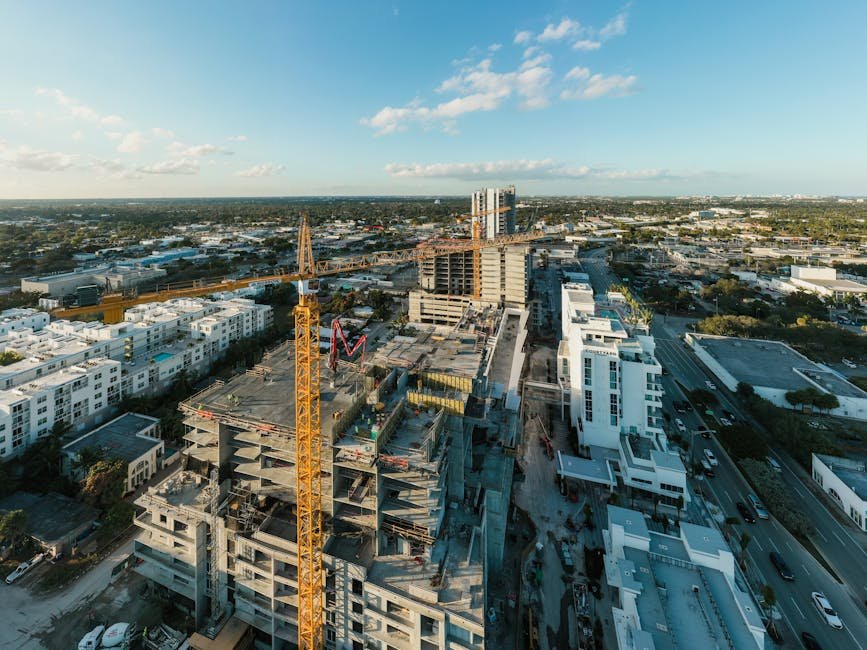Urban Construction Projects: Balancing Efficiency with Community Impact
Urban construction projects play a crucial role in shaping the landscape of cities. They help in improving infrastructure, creating job opportunities, and enhancing the overall quality of life for residents. Such projects are vital for urban development and growth, striking a balance between efficiency and minimizing negative impacts on the community. By carefully considering the needs and concerns of the residents, urban construction projects can successfully contribute to the advancement of the city while ensuring the well-being of its inhabitants.
Balancing efficiency with community impact
In urban construction projects, it's crucial to find a balance between efficiency and community impact. This means completing projects in a timely manner while considering how they will affect the local community. Here are some key points to keep in mind:
Efficiency: It's important to work quickly and effectively to finish projects on time and within budget.
Community Impact: Being mindful of how the construction will impact residents, businesses, and the environment is essential.
Finding the right balance between these two aspects can lead to successful projects that benefit both the community and the construction team.
Sustainability in urban construction
Sustainability in urban construction is crucial to minimize environmental impact and meet the needs of the present without compromising future generations' ability to meet their own needs. By incorporating sustainable practices into urban construction projects, we can reduce energy consumption, limit resource depletion, and decrease waste generation. This includes using eco-friendly materials, promoting green spaces, implementing energy-efficient systems, and prioritizing water conservation strategies. Sustainable urban construction not only benefits the environment but also enhances the well-being of the community by creating healthier and more resilient urban spaces.
Community engagement in construction projects
Community engagement is crucial in construction projects to ensure that the needs and concerns of local residents are considered. By involving the community in decision-making processes, construction projects can better align with the community's desires and minimize any negative impacts. Here are some key points to remember about community engagement in construction projects:
Open communication is essential to keep the community informed about the project's progress and any potential disruptions.
Consulting with residents allows for feedback and suggestions that can enhance the project's design and implementation.
Addressing community concerns promptly can help build trust and goodwill with the residents.
Involving the community in planning can lead to better outcomes that align with the community's needs and values.
Remember, successful construction projects not only prioritize efficiency but also take into account the community's impact and engagement.
Challenges faced in urban construction
Urban construction projects often encounter challenges when trying to balance efficiency with community impact. Here are some common hurdles faced in urban construction:
Limited space for storing materials and equipment.
Traffic disruptions and congestion caused by construction activities.
Noise and dust pollution affecting nearby residents and businesses.
Compliance with local regulations and zoning restrictions.
Coordination with utilities such as water, electricity, and sewage systems.
Ensuring the safety of both workers and the public during construction.
Minimizing disruptions to local businesses and maintaining positive relationships with the community.
Innovative construction methods for urban projects
In urban construction projects, innovative methods like modular construction and Building Information Modeling (BIM) are gaining popularity. These techniques enhance efficiency by streamlining the construction process, reducing waste, and improving accuracy. Modular construction involves assembling building components off-site, allowing for faster completion times and reduced on-site disruptions. BIM enables project stakeholders to visualize the entire construction process digitally, leading to better coordination and communication among team members. By embracing these innovative methods, urban construction projects can balance efficiency with minimizing disruptions to the surrounding community.
Balancing cost and community needs
Urban construction projects must find a delicate balance between meeting budget constraints and addressing the needs of the community. Keeping costs under control while ensuring that the project positively impacts the community is crucial in urban development. Community needs such as access to public spaces, environmental considerations, and overall aesthetic enhancements should all be carefully considered within the project's budget constraints. It is essential to strike a balance that benefits both the project's financial bottom line and the well-being of the community it serves.
Case studies of successful urban construction projects
Successful urban construction projects prioritize both efficiency and community impact. Here are a few case studies that illustrate how this balance can be achieved:
The High Line in New York City revitalized an old elevated railway into a linear park, combining green space with urban renewal.
The Bosco Verticale in Milan is a vertical forest of residential towers that promote sustainability and biodiversity in the city center.
Barcelona's superblocks initiative reclaims streets for pedestrians, cyclists, and greenery, reducing traffic and improving residents' quality of life.
These projects demonstrate that with careful planning and community involvement, urban construction can enhance cities while considering the needs of the people who live there.
Future of urban construction
Urban construction practices are evolving to prioritize sustainability and community well-being. In the future, expect to see more construction projects that focus on reducing environmental impact and enhancing the quality of life for residents. This shift towards sustainable construction methods aims to create a balance between efficiency and positive community impact. As cities grow and develop, urban construction will play a crucial role in shaping a more sustainable and livable environment for all.
Summary of key points
Urban construction projects must strike a balance between efficiency and community impact. It's crucial to consider the project's timeline, budget, and resources while also prioritizing the well-being of the local community. Effective communication with residents, stakeholders, and city officials is necessary for a successful construction project. Additionally, implementing sustainable practices can help minimize environmental impact and create a more livable urban environment for all.

